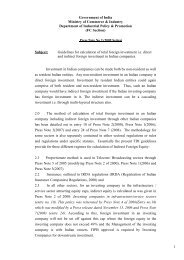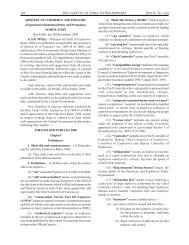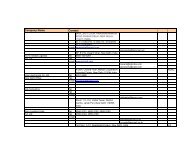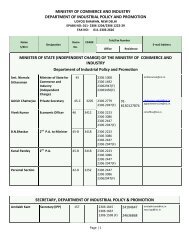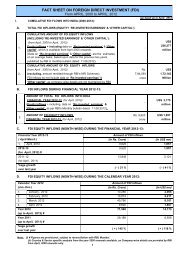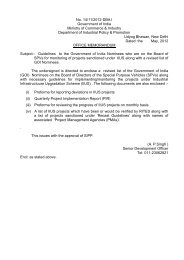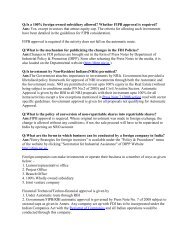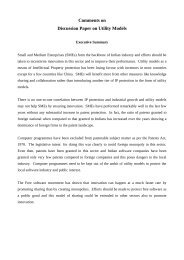GAS CYLINDERS RULES, 19811 - Department Of Industrial Policy ...
GAS CYLINDERS RULES, 19811 - Department Of Industrial Policy ...
GAS CYLINDERS RULES, 19811 - Department Of Industrial Policy ...
Create successful ePaper yourself
Turn your PDF publications into a flip-book with our unique Google optimized e-Paper software.
(iii)<br />
Should the valve be obstructed the contents of the cylinder shall be released in<br />
safe manner as stated in (i) above. Work on cylinders containing combustible<br />
gases shall be carried out in the open air.<br />
Note:- A suitable method of dealing with a valve in which the spindle cannot be removed<br />
is to drill a 1/16 th in (1.6 mm) diameter hole with a hand drill through the valve body to<br />
the gas passage below the spindle seating. Alternatively, a fine-tooth hacksaw may be<br />
used. Drilling or sawing must be stopped immediately upon the first sign of escaping<br />
gas. A continuous jet of water must be directed on to the cutting tools and the operator<br />
must wear protective clothing.<br />
2. Inspection of cylinders before carrying out hydrostatic/hydrostatic stretch test —<br />
(1) Prior to carrying out hydrostatic/hydrostatic stretch test, every cylinder shall be<br />
thoroughly cleaned by steam cleaning or washing out with approved solvents.<br />
Where the interior of the cylinder is affected by rust or other foreign matter it shall<br />
be cleaned by one of the following methods namely:-<br />
(a) Approved blasting, rotary wire brushing;<br />
(b) Burn out treatment carried out in a furnace at a temperature not exceeding<br />
300 0 C for a period of not exceeding one hour after which all free rusts and any<br />
other foreign matter shall be removed by steam cleaning or washing with<br />
approved solvents.<br />
(2) The cylinders after cleaning shall be visually examined externally and as far as<br />
practicable internally for surface defect in accordance with the IS:5845, IS:8451 or<br />
IS:13258 as the case may be, or any other Code approved in writing by the Chief<br />
Controller.<br />
3. Hydrostatic/hydrostatic stretch test/proof pressure test. —<br />
(1) For cylinders used for permanent gases, high pressure liquefiable gases and all toxic<br />
and corrosive gases: --<br />
(i) The cylinders shall be subjected to hydrostatic stretch test in accordance with IS:5844.<br />
The test pressure applied to the cylinder shall be retained for a period of not less than 30<br />
seconds.<br />
(ii) The permanent stretch suffered by the cylinder due to application of test pressure<br />
shall not exceed the following limits, namely:--<br />
(a) In the case of cylinder<br />
below 20 litres water capacity<br />
for non-corrosive gases.<br />
(b) In other cases.<br />
10% of the total stretch suffered during the test.<br />
10% of the total stretch suffered during the test<br />
or 1/5000 th of the original volume of the<br />
cylinder, whichever is less.<br />
(iii) Any reduction in pressure noticed during the retention of 30 seconds or any<br />
leakage, visible bulge or deformation should be treated as case of failure in the test.<br />
32



